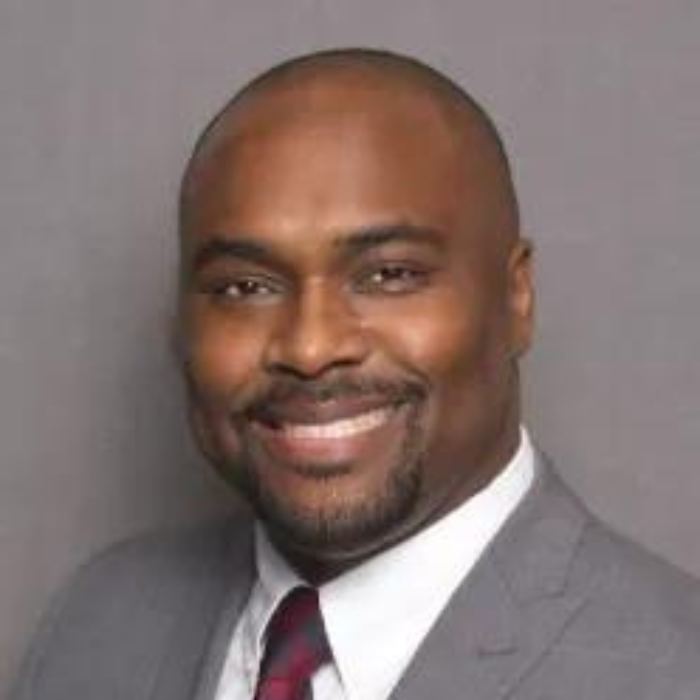
DeAundre Dyer, DO
Member, ACOFP Diversity, Equity and Inclusion Task Force
Osteopathic physicians have always been forward-thinking members of the medical community.
As Thomas A. Quinn, DO, pointed out, there were several women in the first class of American School of Osteopathy (now known as A.T. Still University). Dr. Meta Christy, the first African American to earn a doctor of osteopathic medicine, began her medical education in 1917. Her medical career began a mere 25 years after the inaugural class in Kirksville, Missouri, and 50 years after federal acknowledgement of the personhood of enslaved people. By the time Dr. Christy completed her medical education in 1921, the 19th amendment granting women the legal right to vote had only been ratified the year before.
In late 19th-century America, physicians were not held in high esteem due to the high mortality rate of their patients. By adopting an integrative approach—with the central tenet of viewing the body as a unit—and acknowledging of the interrelatedness of structure and function, osteopathy grew in popularity. In matters of treatment philosophy, education paradigms and professional membership, osteopathic physicians have been leading-edge members of the medical community.
The Osteopathic Treatment Philosophy
Many practices of the early osteopathic physicians did not involve the invasive treatments or caustic chemicals that were standards of care at the time. The reputation of the field grew, prompting new train routes and boarding houses in Kirksville, Missouri. Despite this, osteopaths often encountered barriers to board certification through allopathic channels. At times, they were subject to arrest and lawsuits by their state medical board.
The American Osteopathic Association (AOA) certified its first specialty board in 1939. Since then, it has taken measured steps toward validation, relevance and, eventually, prominence in the medical community. There are now people who specifically seek out the services of an osteopathic physician.
In 2016, patients spent more than $30 billion on complementary and alternative medicine. Many of these treatments involve different approaches that spare patients side effects or invasiveness of a standard of care. These treatment modalities—billed as alternative—have themes within their philosophy similar to the tenets of osteopathic medicine.
In matters of treatment philosophy, osteopathic medicine has a populist appeal that seems to be forward-leaning and resonates with our current medical climate. While osteopathic medicine has led in the membership and treatment philosophy space, the early 21st century needs leadership in new areas.
Health care and public health are unable to heal without first diagnosing and treating the disease of racism that impacts the field. This is an area for osteopathic family physicians to lead.
Social Determinants of Health
The U.S. Centers for Disease Control and Prevention recently declared racism a serious threat to public health. There are examples of racism present in every domain when a person of color interacts with the world around them. Schools, financial institutions, housing, policing, restaurants, workplace and even leisure have all been tainted by the scourge of racism; medicine is no different. While there have been several discussions regarding people of color and their mistrust of medical institutions, they lack context and usually neglect discussing the trustworthiness of healthcare in America.
Medicine has historically and continues to be brutal toward people of color, while concurrently denying the existence of racism to the people it has victimized. This further fuels a cycle of distrust and disengagement. Because this issue has such wide-reaching implications for this country, this topic must be a top-five agenda item for any organization dedicated to improving healthcare outcomes.
Health care and public health are unable to heal without first diagnosing and treating the disease of racism that impacts the field. This is an area for osteopathic family physicians to lead. A full osteopathic assessment of anyone from a redlined district will reveal how matters like climate change, nutritious food access, income inequality, gun violence, transportation and housing security impact life expectancy. More importantly, the sum of these stressors negatively impacts their daily quality of life.
We now have convincing data to show that ZIP code is one of the biggest predictors of life expectancy, as well as compelling data that dis-investment and disregard of certain neighborhoods were calculated policy decisions. For years, these issues have often been declared too controversial and lacked the organizational wherewithal to complete the painstaking work of legislative action. Now, we sit with a front row seat to the suffering, charged with mitigating the mess of poor policy and political indifference but never commenting on the conditions.
Power in Unity
Shortly after I graduated medical school, the National Rifle Association told the thousands of primary care, intensive care, emergency medicine, and physical medicine and rehabilitation physicians who advocated for responsible gun legislations to “stay in their lane.” Predictably, those responsible for reassembling a life, shattered by poor gun legislation, were incensed, launching a public response of tweets and position statements.
I remember daydreaming about the power a unified coalition of physicians would wield and the groundswell of support they would receive from the public. I recall waiting for direction from leaders of the numerous medical organizations to which I belong. When no such direction came, I started investigating in various state societies. A mentor informed me that the membership could not agree on a direction.
After the conversation closed regarding gun legislation, the topic shifted to young physician recruitment. I began to think about all of the forward-thinking conversations I had over the years with solution-oriented physicians. I wondered if one day, we would renovate the house of medicine we inherit or just tidy it up for its next occupants.
I realized that in order to achieve my career goals in medicine, I must also advocate for sensible policy. I liken my career as a physician to that of a lifeguard. I will see a finite number of people and, hopefully, improve the health and wellbeing of most, much like a lifeguard will jump in to rescue a finite number of people from drowning. However, advocacy on a city, state or federal level will allow me to relieve the suffering of many more, multiplying the impact of my career. Advocacy is the preventative step that does not allow the person to fall into the water. So, while the lifeguard may jump in and save 50,000 individuals in his/her career, the policy maker who advocated to close the beach on high surf/strong current days likely saved 200,000.
Embracing Advocacy
The enormity and broad-reaching implications of the aforementioned issues requires an all-hands-on-deck approach. While social determinants of health have always been a part of the whole person assessment of our patients, family physicians are now tasked with the new challenge of capturing and connecting our patients with appropriate assistance.
Social determinants of health are a proxy for the vestiges of racism that have pervaded our culture since its inception. Race, as a construct, was introduced to regulate access to resources. To deconstruct this system, we have to not only address generational prohibition of resources but also the antiquated attitudes that accept racism as the status quo and policies with inequity written into its framework. It is a monumental task, but with more than 6,000 osteopathic physicians graduating each year, many hands will make light work.
The American College of Osteopathic Family Physicians (ACOFP) is poised to lead and innovate in this space. Because we now have this increased level of responsibility, we must now advocate in non-traditional spaces to fully address the health needs of the patient in front of us. We have to understand that conversations around transportation, housing inequality, gun rights, education and food access fall under the umbrella of health. These conversations will not only enhance the lives of the people we serve but lessen the burden we face when attempt to combat high-needs patients with under resourced care.
I implore you, my fellow family physicians and leaders in your state, to take this as your call to action. There are vital conversations happening in state houses all over the country. I encourage you all to be a part of these conversations and help our elect officials understand the implications of their policy. I ask all 20,000+ members of ACOFP to embrace advocacy.





Leave a commentOrder by
Newest on top Oldest on top